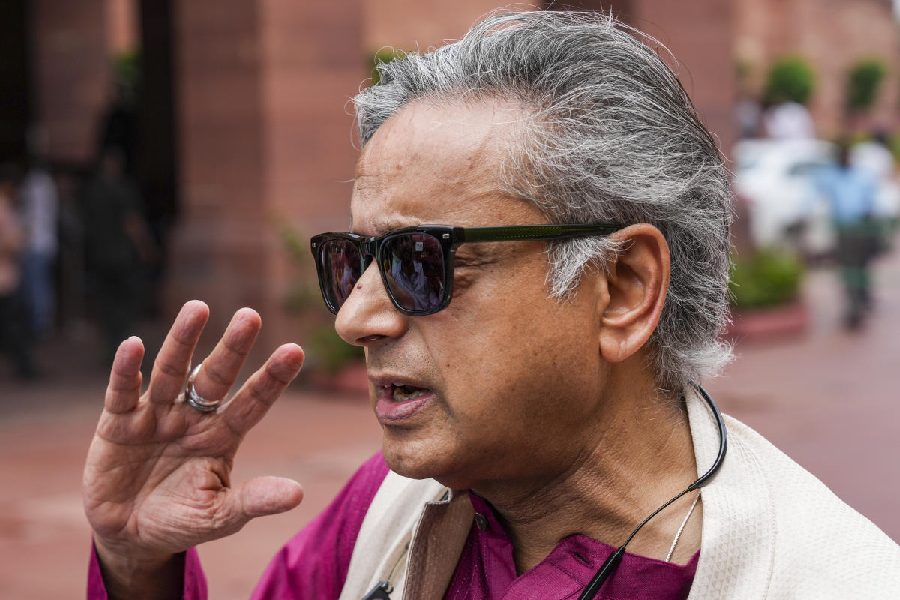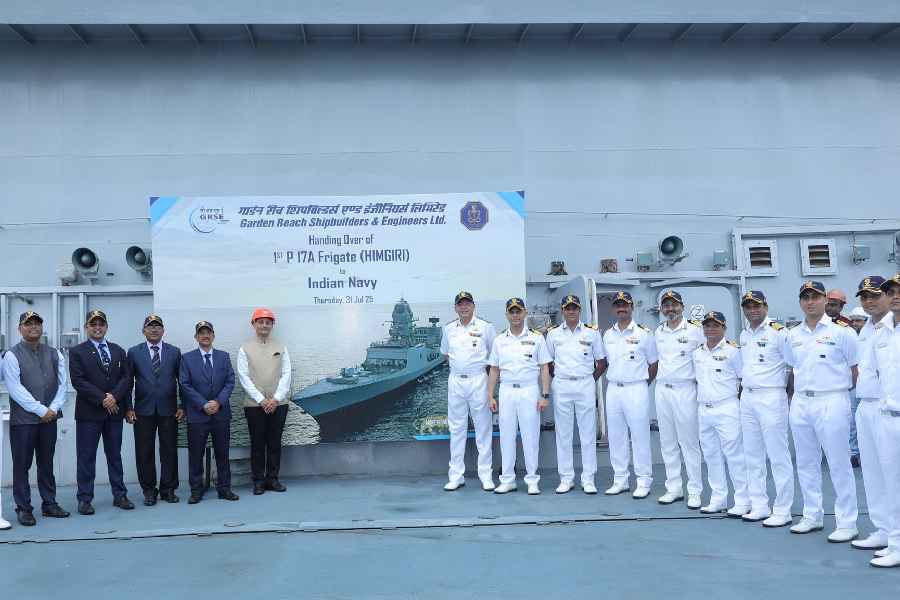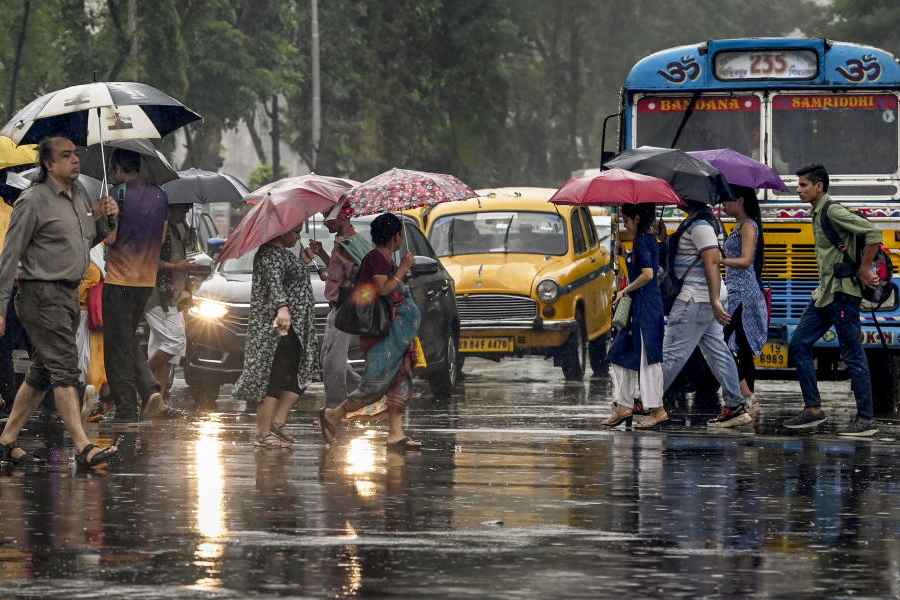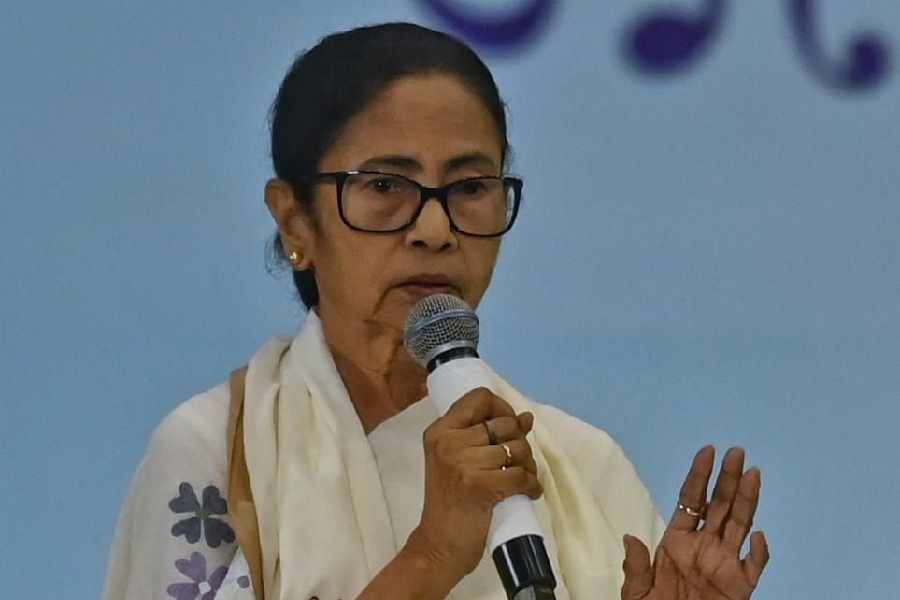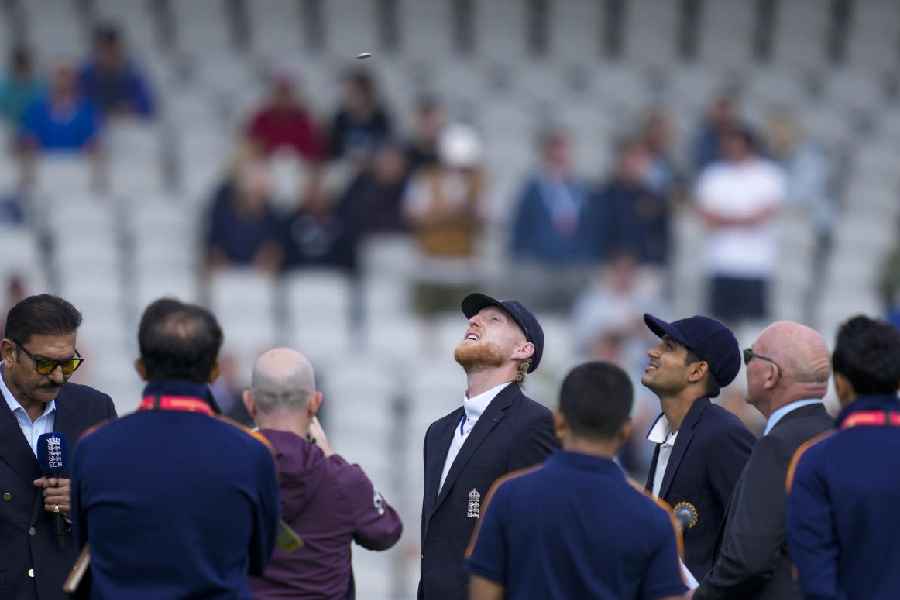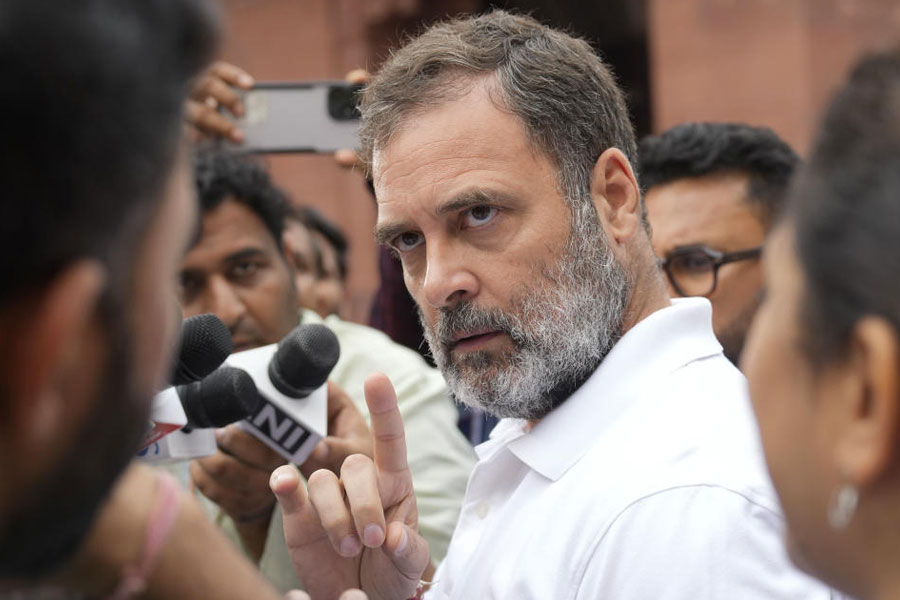 |
| Assamese girl Nandeeta Das dressed like a Punjabi bride with her husband Ranjeev Salhotra |
Till a few years back, mixed marriages were taboo. Today, it has become a trend. Visionaries laud it as a way to create a mixed race that will bring peace to the planet. Some of your closest friends have done it and everybody gossips about it. You can like it or dislike it, but cannot possibly ignore it.
At a time when the whole country is changing, Assamese society, too, is going through a transition. People are learning to accept mixed marriages and adjust to the changing circumstances.
Nandeeta Das, an Assamese girl from Guwahati, had no misgivings when she decided to marry her Punjabi boyfriend, Ranjiv Malhotra. “I was too young to realise the problems of mixed philosophies and mixed cultures. But it did not pose a problem later either. And I have adjusted quite well now,” she says.
She calls his parents, Mummyji and Daddyji, and he calls hers Ma and Deuta. “On the wedding day, I wore a red salwar kameez and he was dressed like an Assamese groom. In fact, we have adapted to each other’s customs and traditions very well,” she adds with a smile.
We all like to think of ourselves as liberal people. However, deep down, do we really feel that way? How does one truly feel about inter-religion marriages? Does “love make the world go round”, or is it religion, tradition and society?
Most members of the older generation find it hard to rise above religious differences. However, Gopal Baishya, a resident of Guwahati, is proud to be the father-in-law of Parijaat, a Parsi girl. His son, Deepak, married Parijaat after they met in Goa, where they were both worked at a hotel.
Says Baishya, “If they love each other, that is all that matters. As long as they are happy, we are happy. My daughter, Nomita, too, has married a Punjabi and lives in Gurgaon.”
Asked if there was any opposition from his relatives, Baishya replies, “No one said anything to me. Inter-religion marriages are quite common now.” The happily-married couple, Deepak and Parijaat, has successfully integrated the Hindu and Parsi cultures.
Parijaat’s family, however, opposed the marriage and did not attend the function. The Parsi community is averse to inter-caste or mixed marriages. One of the main causes for the downfall of the mighty Sasanian Empire of Iran was the inter-marriage among the members of the Royal family.
“For Parsis, marrying within the community is important as it is seen as a means of self-preservation. They feel that inter-religion marriages lead to dilution of faith and weakening of cultural bonds,” adds Baishya.
Runu Bhattacharjee, a lecturer of Jagiroad College, has a cosmopolitan household. Her daughter, Parinita, has married a Malayali Christian, Anil Mathew, and son Prasenjit is married to a Bengali, Puja Roy.
“Both my daughter and my daughter-in-law have retained their surnames. In fact, my daughter can speak Malayali and her in-laws have accepted her very well. As her husband’s family is very liberal, it has been easy for her,” says Bhattacharjee.
She feels that the trend of mixed marriages is on the rise because of globalisation and increase in the number of youths going out of Assam to pursue higher studies. “Internet marriages are on the rise and they have been quite successful. But it helps if the couple stays in a metropolis,” she adds.
Runu says she loves Puja like her own daughter and is happy that she respects and understands Assamese culture. It is not often that they come to Guwahati because they are too busy with their careers. Whenever she comes to visit us, she wears mekhala chador. She likes to do these things on her own and we appreciate it.”
Archana Sharma, in charge of Women’s Study Research Centre, Gauhati University, feels that the concepts of caste, creed and religion in Assamese society are undergoing a paradigm shift.
“I might not know my neighbour, but I do chat regularly with my friend miles away on the Internet. Aspects like education and economics play a dominant role in bringing like-minded people together,” says Sharma.
Sharma says that with more and more people opting for unconventional careers, society is becoming cosmopolitan. “Maybe we are moving away from our roots,” she adds.
Kamal Kumari Baruah, president of the Asam Pradeshik Mahila Samiti, feels that there is no problem in mixed marriages, be it inter-caste, inter-religious or inter-state, provided the family and the couple share a healthy relationship.
“There is no guarantee that marrying a person of the same caste, community and religion is the key to marital bliss. It is how a couple deals with the ups and downs of life that determine whether a marriage is a success or not. In fact, we encounter more problems in marriages between people of the same caste, community and religion,” says Baruah.
Psychiatrists and family counsellors feel that children bear the heaviest burden of mixed marriages. Sailendra Kumar Talukdar, a psychiatrist, says, “I believe your faith is your way of life. However, it is always not so easy to do away with religion or faith, especially in cases of mixed marriages, as many psycho-social factors come in. Many a times, the couple may have adjustment problems, which lead to anxiety and depression.” He adds, “The child, too, may show behavioural problems.”
A doctor-couple, Brajendra Lahkar and Sultana Taslima Begum, faced teething problems for a year after they tied the knot. Lahkar says, “Inter-religion marriage depend on the strength of the couple. We don’t practice any religion at home. In fact, the problem starts when you start practising a particular religion and do not respect the other’s.”
Lahkar says that from the very beginning he made it clear to his relatives that “it is my house and I will run it according to my wish”. He adds, “Social pressures were there, initially, but once they saw that you will not bend to their wishes, they will leave you alone.”
The couple married in three different ways, a civil marriage in court, according to Hindu rites and then Muslim rites. “This made our parents, who are staunchly religious, very happy,” he says. They have a three-year-old son, Sahil. “I want my son to respect all religions. It is up to him to choose any religion,” he says.
Under the provision of the Special Marriage Act, 1954, people of different castes and creed can get married without any legal hassles.
“Under this Act, marriages can be solemnised by persons belonging to any community or religion, provided the groom is 21 and the bride is 18 and neither of them is married. Both parties should give valid consent to the marriage and should be mentally stable,” points out Nazrul Islam, a lawyer.
No marriage comes without challenges. It could be argued that, to a certain extent, all marriages are “mixed”. After all, no two persons have the same upbringing.
It is often seen that marriages which society claims “won’t last for more than a day” that go on to witness many, many years of marital harmony.


